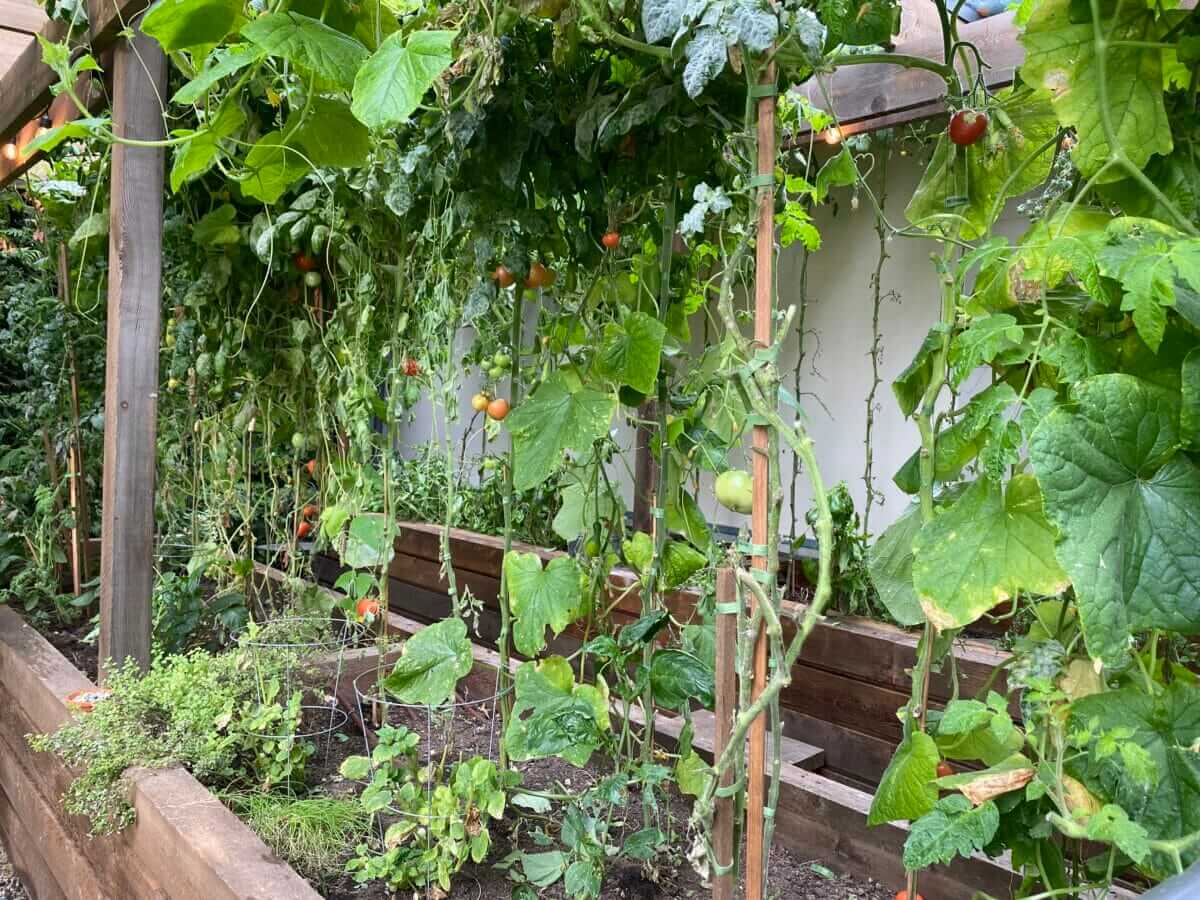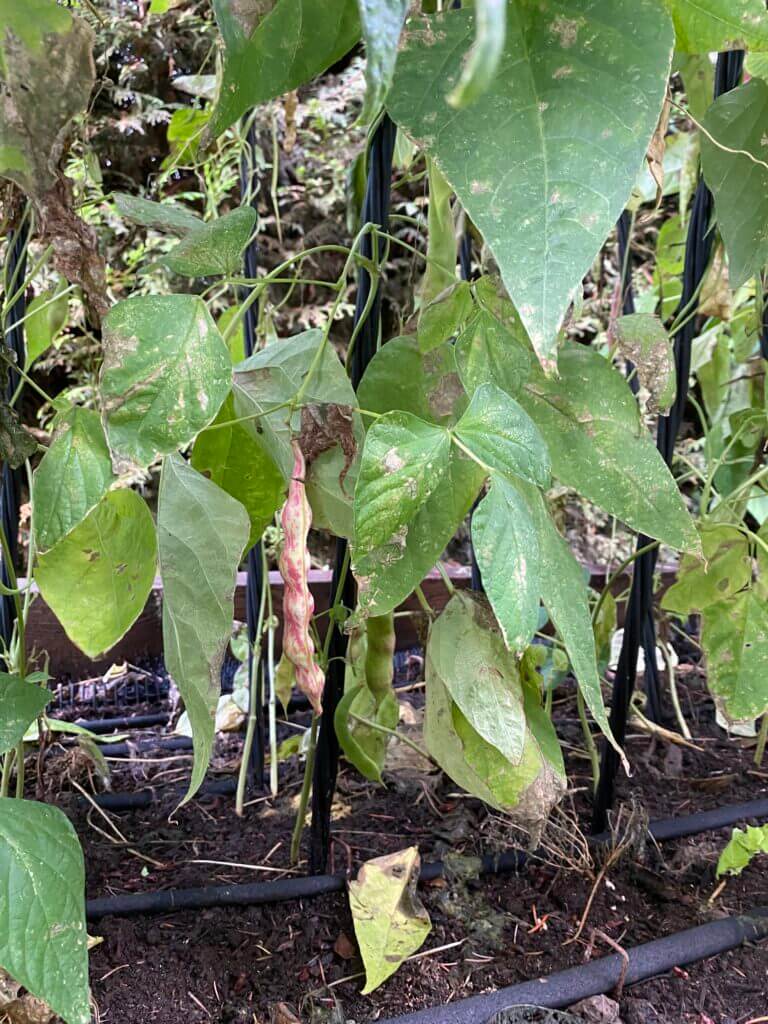A letter from our publisher.

As the summer season comes to an end and fall weather sets in, I’ve been reflecting on what I learned in my first gardening season. When we launched the Million Gardens Movement last year, I decided to jump in with both feet and take my gardening more seriously than before. In past years, I maintained a small garden in a corner of my property where my late father used to spend his idle time growing Romano beans. To be honest, I let him do all the work and was only useful when it was time to harvest our bounty.
I owe tremendous gratitude to my friend, Laura Marie Neubert from Up Front and Beautiful, who spent hours upon hours teaching me not only about basic gardening techniques but also introducing me to the science behind urban permaculture. We decided it would be a great experience to create a permaculture garden on my property. Laura designed my gardens and was the project manager, creating three separate areas that each had a specific objective.
The upper garden was designed as a heat sink with a glass roof, perfect for growing tomatoes—and tomatoes we grew. There were six different varieties, including my favorites, Cascade and Sungolds. We also planted cucumbers and squash and included other features such as a rainwater collector, native bee houses and a worm compost, which were all intended to complement our plants the way nature intended.
In the lower garden, we planted Romano beans from the same seeds my father brought over from Italy some 60 years ago. We put in a few radish plants and Elysium flowers to attract beneficial insects. On my back deck, we planted a variety of leafy vegetables and herbs in stainless steel planters.
Our gardening experience was an overall success. I enjoyed my fresh tomatoes, cucumber salads and green beans, steamed with garlic and olive oil just like my mom used to make. It was convenient having my herb spiral close to my kitchen entrance, too.
We did learn a few things, however, that will come in handy for next season. We’re now preparing to plant winter vegetables. I’ve been told that when designing a permaculture garden, one needs a full year of experience to fully understand the landscape, all aspects of the weather, temperature and ecosystem before deciding what should grow where. As this was our first year, we didn’t have the benefit of hindsight.
We discovered that we weren’t getting as much sunlight in the section with tomatoes as we had originally thought. We cleaned up the dead foliage from the plants to allow light in and ripen the remaining tomatoes. However, next season, we plan on planting some of the vining tomatoes elsewhere (with the exception of the cherry and Sungolds, which did very well) and use a lower bed in the upper garden for other vegetables such as onions, beets, garlic and squash. We will plant the other tomato varieties on my back deck, which gets more sunlight exposure, and perhaps plant earlier in the season. We did plant squash this year, but it didn’t pollinate, perhaps because there were too few bees. Next season, we will hand-pollinate them. Some of our tomatoes also experienced a minor deformity that was likely due to stress caused by the extreme heat we experienced in Western Canada this past summer.
The soil may have been an issue and Laura Marie is having the soil tested for some hard-to-pronounce bacteria. It’s more likely that it was just a case of too much saline in the soil. Given that we only created the soil beds in the spring, it may take a winter season of rain to clean the surplus salts out. Top-composting the soil in the fall should help.
We also plan to plant more pollinator-friendly plants and introduce native bee cocoons next March and April. This will be especially important if I plant dwarf fruit trees next spring as I intend on doing. Over the winter, we will be putting up walls under the heat sink in the upper garden. It won’t create a true hothouse, but it will protect the plants from wind, rain and extreme cold.
The Romano bean plants were a huge success. I harvested all I could eat during the two weeks they were at their peak. I vacuum-sealed and froze the rest, and I left some bean pods on the plants in order to harness their seeds for next season.
We are turning off the drip irrigation for the winter and will be using water from the rain collection barrel when needed. We will be planting our winter vegetables as soon as the new walls are up, likely sometime this month. Laura Marie has been nursing the seedlings in her hothouse. We will include arugula, winter kale, mustard greens, broccolini and radicchio. I am especially looking forward to the rapini (also called broccoli rabe), one of my favorite greens. I like to cook it simply with salt, garlic and olive oil.
All in all, it was a great first season. I learned a lot and, although I still have a lot more to learn, it is an enjoyable kind of learning. I am more and more convinced that gardening is a great way to relax. I feel a sense of immense achievement and satisfaction growing my own food. You can, too.
Visit MillionGardensMovement.org to learn more about the movement and/or to join it.

After about five years you will realize that it takes about ten years to learn what makes your garden work and then it all changes. My garden demands of me that I am flexible but I am not allowed to make demands of my garden. All that is fine by me.